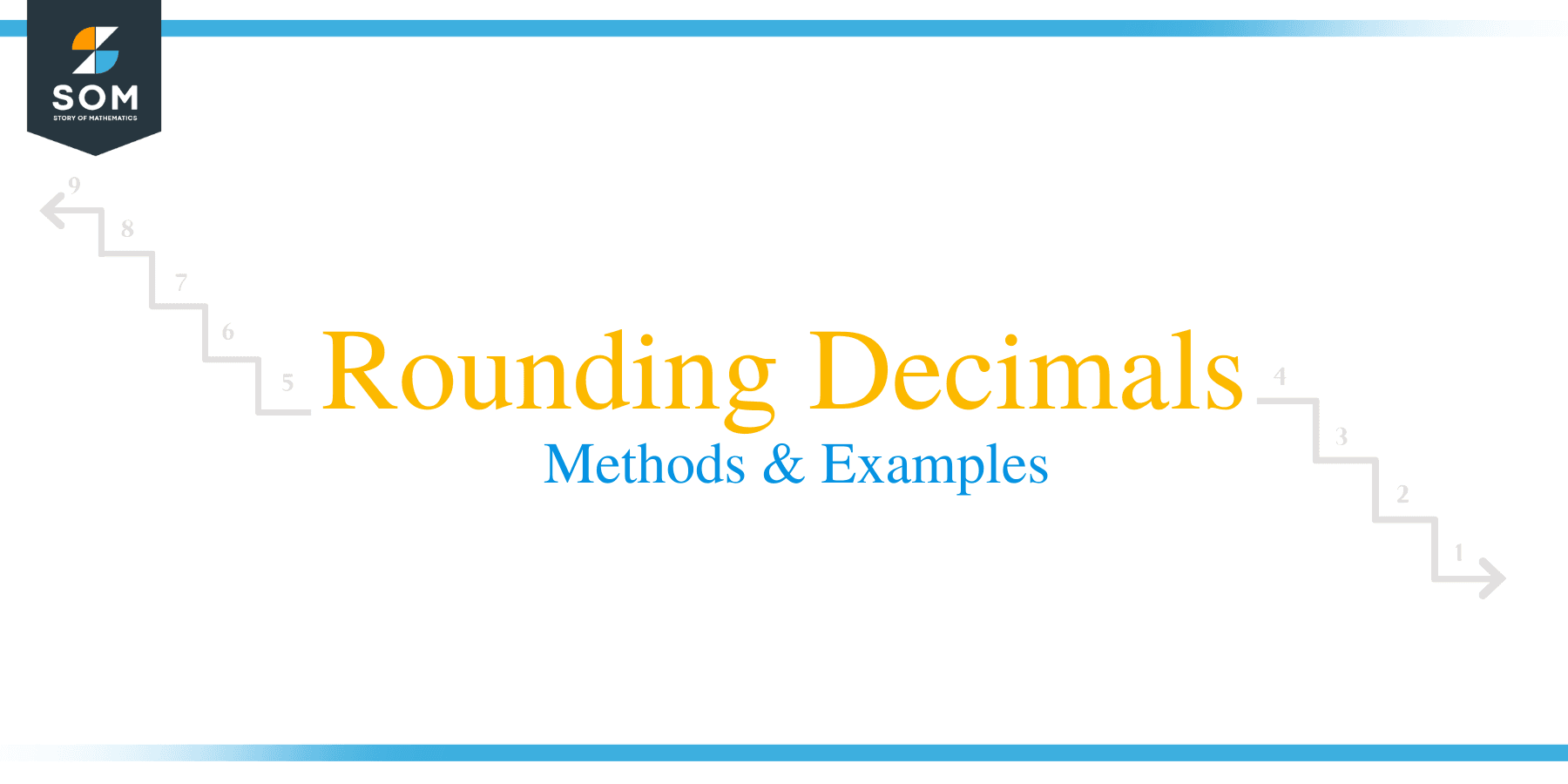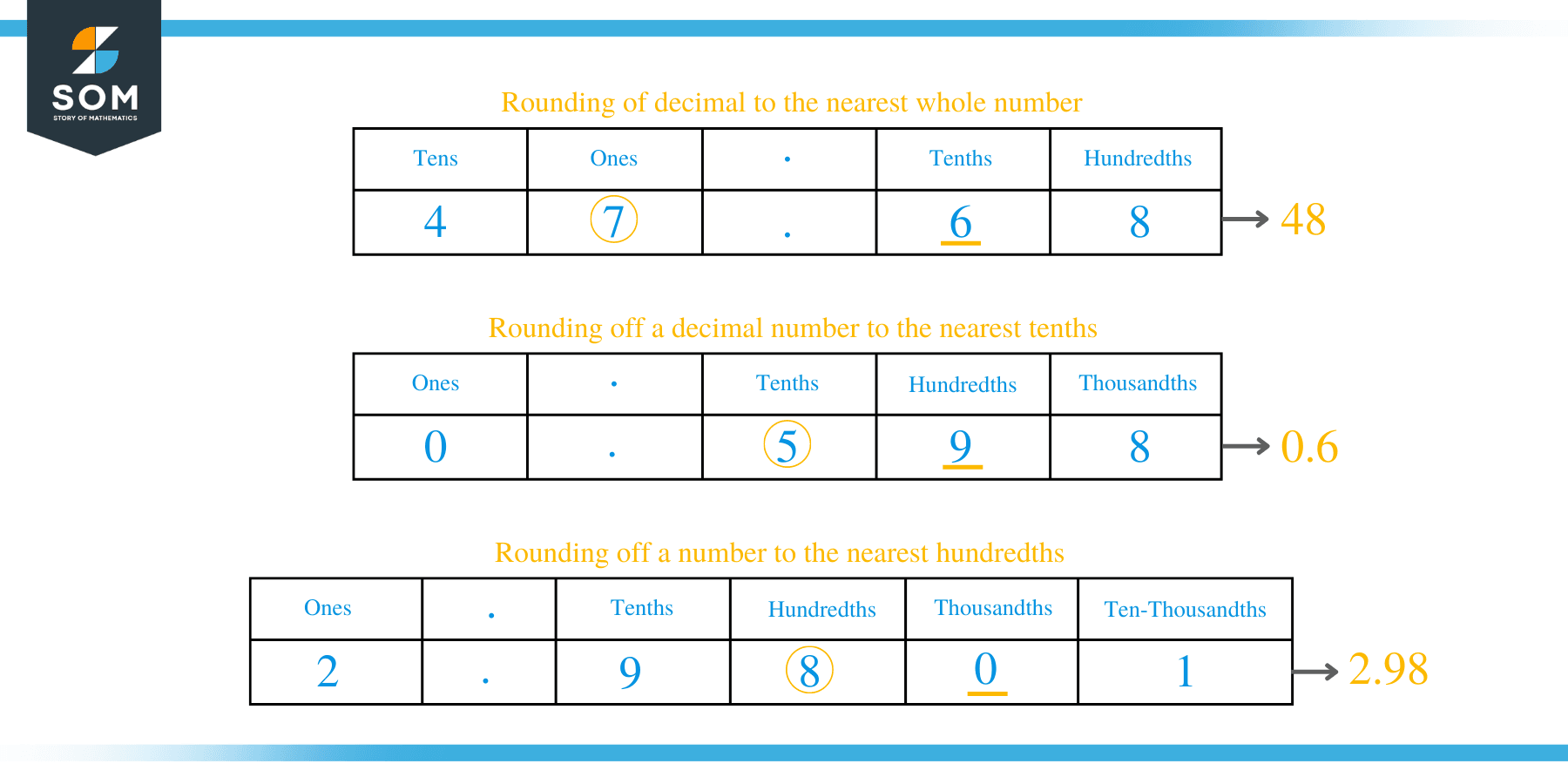- Home
- >
- Rounding Decimals – Methods & Example
JUMP TO TOPIC
Rounding Decimals – Methods & Example
 What is Rounding off Decimals?
What is Rounding off Decimals?
In mathematics rounding off decimal is a technique used to estimate or to find the approximate values and to limit the amount of decimal place. Rounding decimals off is an activity we encounter most of the time in our daily life.
Some of the physical applications of rounding decimals are an estimation of the cost of items, distance covered between two points, length of objects, and the weight of commodities. These quantities are estimated by rounding off their values to a given specified accuracy.
How to Round off ?
Rounding off is an arithmetic technique of finding an approximation of a precise number. Decimal numbers are rounded off to a specified decimal place in order to make them easy to understand and manageable, instead of having a long string of decimal places.
In this article, we are going to learn how to round off decimal numbers in different decimal places.
- Rounding off a decimal number to the nearest whole number.
- Rounding off to the nearest tenths or in other words to one decimal place.
- Rounding off to the nearest hundredths which is same as rounding of to two decimal places.
Rounding of decimal to the nearest whole number
When rounding of a decimal number to the nearest whole number, the tenths digit is checked whether it is above or below 5. If the tenth is equal to or above 5, the number is rounded up and if the tenths digit is below 5, the number is rounded down.
Rounding up a number when the tenths digit greater or equal to 5 is simply, adding 1 unit to the ones digit or the first digit to the left of the decimal point. You then write the remaining numbers after dropping all numbers to the right after the decimal point.
Example 1
Consider the number 47. 68. Round the number off to the nearest whole number.
- In this case, the ones digit is 3 and the tenths digit is 6
- The ones digit is 7, and the tenths digit is 6. Since the tenths digit is greater than five, then add one unit to the ones digit, which gives 48. 68.
- Write the number without a decimal point and the digits after the decimal point.
- Finally, 48 is the answer.
Take another scenario where the tenths digit is less than or equal to 4. In such a case, the ones digit remains unchanged and therefore, the number is rewritten by dropping off the decimal point and the number s after the decimal points.
Example 2
Consider another number 65. 468. Round off the number to the nearest whole number.
- The ones digit of this number is 5 and the tenths digit is 4.
- Since the tenths digit is 4, then the ones digit will remain unchanged, 65. 468.
- Rewrite the number by dropping off the decimal point and all the numbers after it.
- Therefore, 65 is the answer.
Rounding off a decimal number to the nearest tenths
Rounding of a number to the nearest tenths is the same as rounding a number to 1 decimal place. In this case, the digit in the hundredths place is identified.
When the digit in the hundredths place is greater or equals to 5, the tenths digit is increased by one unit. The rest of the numbers after the tenths digit are dropped.
When the digit in the hundredths place is equal to or less than 4, the digit in the tenths places remains unchanged. The rest of the numbers after the tenths digit similarly are dropped.
Example 3
Round of the following numbers to the nearest tenths: 0.598 and 0.549.
- To round off 0.598 to the nearest tenths, the hundredths digit is checked whether it is greater or equals to 5.
- Since the hundredth digit is greater than 5, the tenths digit is increased by one unit.
- The number is rewritten without the numbers that come after the tenths digit.
- Therefore, the answer is 0.6
To round off 0.549 to the nearest tenths, the hundredths digit is also checked whether it is greater than or equals to 5 or less than or equals to 4.
- In this case, the hundredths digit is 4 and therefore, the tenth digit will remain unchanged.
- Write the number with the digits that come after the tenths digit.
- The final answer is therefore, 0.5
Rounding off a number to the nearest hundredths
Rounding off to the nearest hundredths is the same as rounding it to 2 decimal places. To round off a number to 2 decimal places, look at the digit in the thousandths place.
If the digit in the thousandths place is greater or equal to 5, the hundredths digit is increased by one unit. And if the digit in the thousandths place is equal to or less than 4, the digit in the hundredths places will remain unchanged.
Example 4
Round off the following numbers to 2 decimal places: 6.00569 and 2.9801
- To round off 6.0056 to the nearest hundredths, the thousandth digit is checked and is equal to 5.
- Add one unit to the hundredth digit and drop all the digits that come after it.
- The answer is therefore, 6.01
To round off 2.9801 to the nearest hundredths:
- Check whether the thousandths digit is equal to 5 or is less than or equals to 4.
- In this case, the thousandths digit is 0, therefore, the hundredths digit remains unchanged.
- And so, the answer is 2.98.


